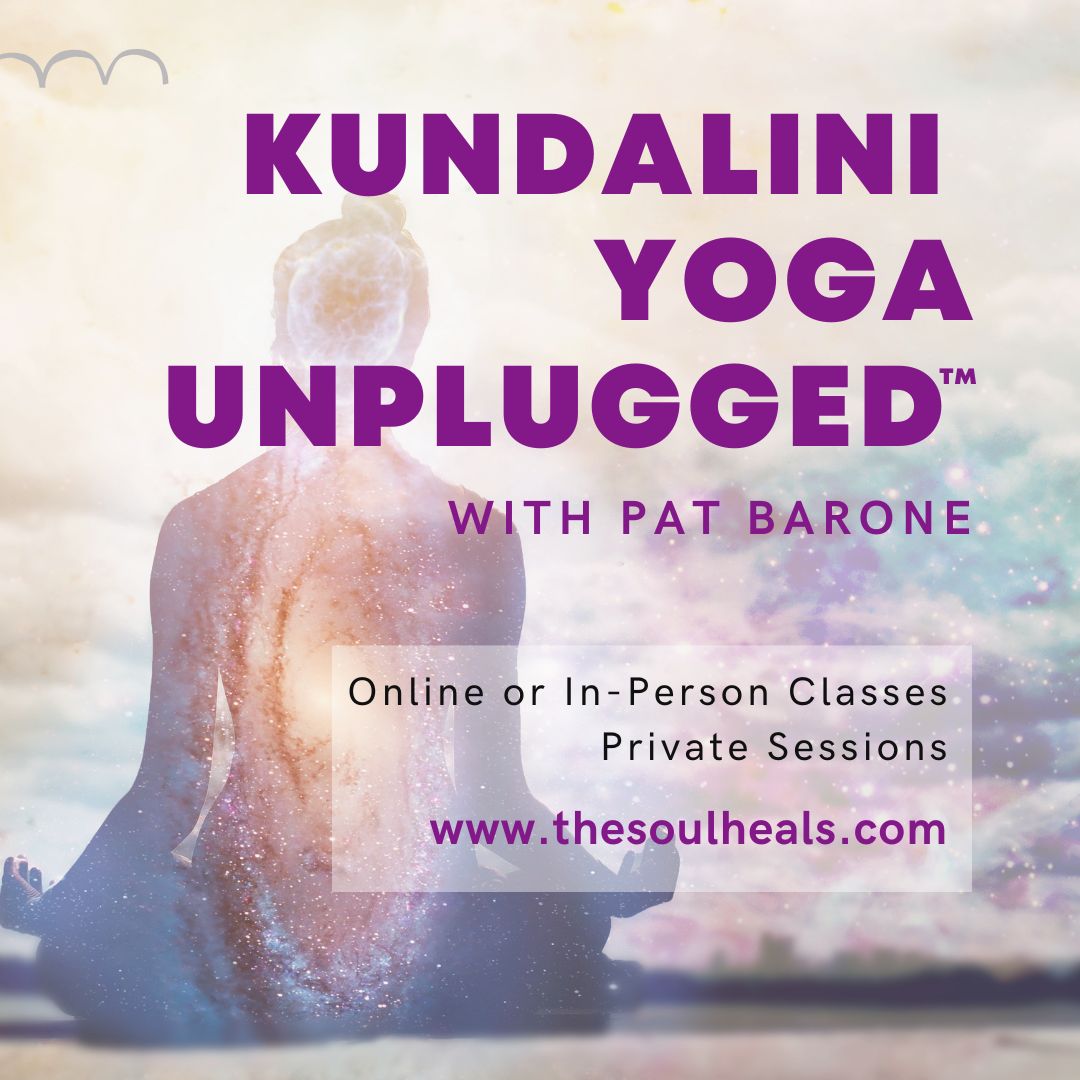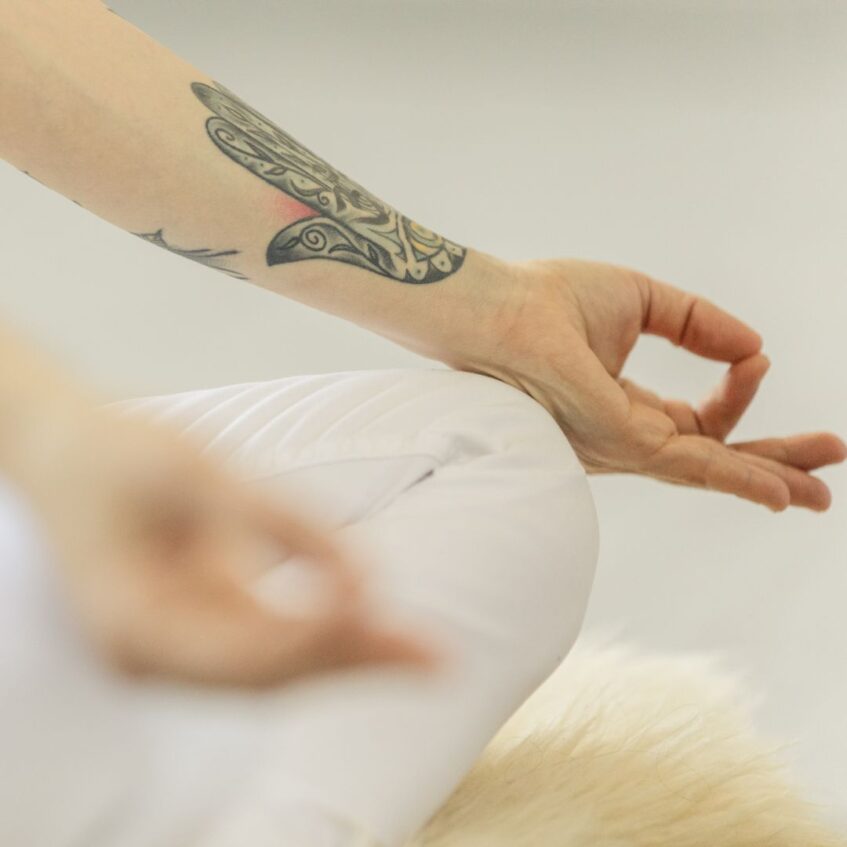Over the years, I’ve met so many people curious about Kundalini Yoga but hesitant to explore it because of things they’ve read, seen online, or heard from others. I understand those concerns deeply. As someone who teaches trauma-informed Kundalini Yoga, I’ve seen how misinformation and fear can prevent people from experiencing the profound healing through yoga that this practice offers.
The truth is, when Kundalini Yoga is taught with awareness, compassion, and integrity, it’s a gentle, energy-based yoga that supports trauma recovery, nervous system balance, and inner empowerment. My goal with Kundalini Yoga Unplugged™ is to bring clarity, safety, and authenticity back to this ancient practice so that everyone, no matter their background or beliefs, can experience yoga as a tool for healing, connection, and awakening.
Here are three popular myths to be aware of:
Myth #1 – You have to be Sikh to do Kundalini Yoga OR Doing Kundalini Yoga Makes you a Sikh
While the modern form of Kundalini Yoga grew out of Northern India, especially the Punjab region where Sikhism blossomed, the concept of kundalini is much older and quite universally represented throughout history. It shows up in ancient texts long before the Sikh Gurus, describing the gentle awakening of our inner life force.
In truth, there isn’t just one “type” of yoga. There are countless lineages and traditions that have evolved over centuries, overlapping and influencing one another like streams flowing into the same ocean.
The asana-based yoga taught in most North American studios is Modern Postural Yoga, a “workout focused” yoga influenced by Hatha but also merged into Western practices of gymnastics, calisthenics, etc. in the early 20th century.
For me, that’s part of yoga’s beauty. Yoga isn’t a religion, it’s a practice, a living framework that helps us connect to something greater. You might call it God, Source, Self, Heaven, Infinity, or simply Spirit, whatever name feels right to you.
Yoga is a valuable tool which reminds us that the Divine is within us, no hierarchy, no dogma required. And this isn’t unique to India. Around the world, many indigenous cultures developed their own ways of connecting body, breath, and spirit—through movement, stillness, and ceremony. You can find echoes of yoga’s essence in ancient practices from the Americas, China, Thailand, and Australia. It seems that wherever humans live, we find ways to remember who we are.
I also love that the Gurmukhi script, the writing used in Sikh teachings and the Guru Granth Sahib, was created to make ancient wisdom more accessible to everyone, not just the educated, elite or royalty.
To me, that spirit of openness and equality mirrors what trauma-informed yoga and inclusive yoga aim for today, a space where every person feels safe, welcome, and worthy of connection and love.
Myth #2 – The yoga might cause your Kundalini to awaken
The purpose of yoga isn’t to “make” Kundalini rise. Rather, yoga gently tunes us into the Spirit within, helping us clear and balance the body and mind so our natural energy can flow freely.
The Kundalini energy – that innate life force resting at the base of the spine – exists in all of us. In most people, it lies dormant until we begin the gradual process of awakening through awareness, self-inquiry, and healing. When
we work to clear emotional and energetic blockages, the energy begins to move naturally, at its own pace.
Because Kundalini is often associated with spiritual awakening, it can attract those who want to “skip ahead” to enlightenment without doing the deeper work of healing past trauma or tending to the body’s readiness.
True awakening, however, can’t be forced or prescribed. It unfolds as we become more integrated and aware, not through striving, but through surrender and steady practice.
While many Eastern traditions view spiritual awakening as a normal part of human growth, Western culture has often misunderstood, pathologized, or even feared these experiences. This cultural fear can create resistance, making people wary of their own spiritual potential.
Kundalini Yoga, practiced with patience and presence, helps dissolve that fear so awakening, when and if it happens, can be met with balance, humility, and grace.
Myth #3 – Kundalini “Sickness”
You might have heard the term “Kundalini sickness” used to describe strange or uncomfortable sensations people experience during energy awakening. But this isn’t really an illness, it’s often a sign that energy has hit areas of resistance or blockages in the system.
In yogic understanding, Kundalini energy moves upward through the body’s subtle channels and seven chakras, clearing and balancing as it ascends. Sometimes, when the energy meets old tension, trauma, or unprocessed emotion, it can feel intense, even disorienting. That doesn’t mean something’s wrong, it simply means the body, mind, and energy are reorganizing to allow more flow.
Symptoms like dizziness, emotional swings, or feeling “off” can arise if energy gathers in the upper chakras before the body is fully grounded. When that happens, the most supportive response is not panic, but grounding — resting, breathing, moving gently, and, if needed, seeking help from an experienced teacher, healer, or trauma-informed guide who understands energy work.
Talking about it can be helpful, but real balance comes from moving and integrating the energy through breath, body awareness, and compassionate self-care.
Sometimes, we unconsciously resist the energy because joy, ease, or radiance can feel unfamiliar after years of carrying pain.
Healing the body and nervous system prepares a stable foundation, so when Kundalini does rise, it’s gradual, safe, and deeply nourishing.
True awakening isn’t dramatic, it’s natural. As we clear layers of old wounds, we don’t become “sick.” We become more grounded, embodied, and alive.
When practiced with care, grounding, and self-compassion, Kundalini Yoga is one of the most powerful ways to awaken awareness and transform pain into peace. It’s about empowerment through yoga and learning to trust your own inner wisdom. Through trauma-informed yoga and mindful, energy-based practices, we can heal old wounds, regulate the nervous system, and reconnect to joy and wholeness.
My hope is that this article helps dispel fear and misunderstanding so you can experience what authentic yoga practice truly feels like: safe, inclusive, heart-centered, and transformative. Whether you’re beginning your journey or returning after time away, remember, you already hold the light and energy you seek. Yoga simply helps you remember.
Join Me. Experience Kundalini Yoga Unplugged™
 You deserve a yoga practice that honors your story and your healing.
You deserve a yoga practice that honors your story and your healing.
You deserve to move, breathe, and reconnect in a way that feels safe and authentic.
🪷 Join a Class: Experience Kundalini Yoga Unplugged™ online or in person — a trauma-informed, heart-centered space for growth and renewal. Reserve your spot here.
🪷 Stay Connected: Subscribe to my newsletter for reflections on healing, self-awareness, and living in your light.
Together, let’s unplug from the noise and reconnect to the soul.💛

